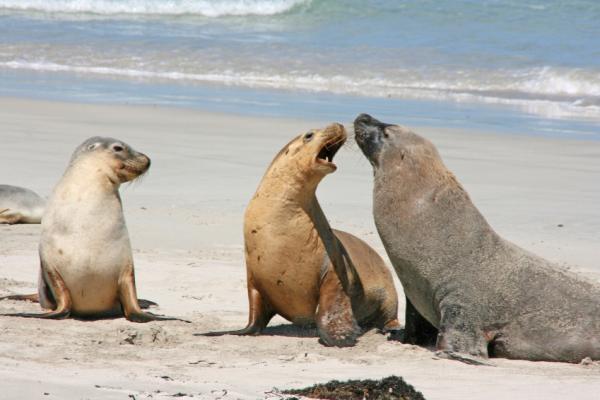Animal Viewing - Seal Viewing

There are some tourist destinations where seal viewing grows in popularity. Iceland, Scotland or Namibia have witnessed an increasing number of visitors looking for this type of experience.
Despite this activity lacks of an international code of conduct (Öqvist, 2017), there is a growing concern about the effects of this activity on marine conservation. In the case of hiring a seal sighting in the sea, we will have to apply recommended codes of conduct for observing marine wildlife.
Scotland hosts the largest number of common seals in Europe, but its population, as indicated by the Seal Mammal Research Unit, has decreased in recent years. There are several reasons for this decline –excessive pollution, chemical intake, fishing nets, or noise pollution- and the stress caused by human presence is one of them: human discomfort can lead mothers to abandon their young (Hoover-Miller, 1994) or to the search of new zones to give birth. In the UK, to reduce these negatives effects from the sighting of marine fauna, have developed TheWiseScheme for tour operators that offer these activities in a safe way for wildlife.
Seals hauled out on land, rock or ice are sensitive to boats and human presence. Noises, smells and sights may elicit a reaction. It is important to learn to identify the signs that tell us that our presence threatens the welfare of these animals.
Be aware of seal behavior that indicates annoyance:
- Sudden head turns. It means an increase in alert.
- Change in posture from lying to erect.
- Hurriedly moving away from the approaching vessel.
- Open mouth threat displays (almost like a yawn).
- Aggressive displays or bluff charges in your direction.
For this reason, the sightseeing of seals must respond to the following guidelines proposed by the IAATO (International Association of Antarctica Tour Operators) in its Code of Conduct for the sighting of seals on land:
- Keep a minimum safety distance between 5-10 meters. Seals and fur seals are highly mobile on land and can ram and bite if you get too close.
- Do not surround or separate them, especially mothers and pups. Stay on the side where they can see you.
- On beaches, avoid getting between seals and the sea.
- Try not to break their horizon or tower over hauled-out seals.
- Pups are often left alone when the mother is feeding. They are not abandoned and should be left alone and not touched.
- Keep quiet and calm. Talk low and be keep your radio volume to minimum.
- If an individual or a herd moves towards the water or there is a hurried entry into the water by many individuals, you should retreat slowly and carefully.
- Be aware of animals in tussock grass areas. Ideally a staff member should lead the way with a stick.
